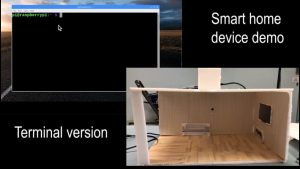ENGG1320 Engineers in the Modern World
Appear in the 1st Engineering InnoShow (30 April 2019)
Chair: Dr. K.L. Or (Department of Industrial and Manufacturing Systems Engineering)
Project arrangements
Dr. Calvin K.L. Or (Department of Industrial and Manufacturing Systems Engineering)
Students can choose to work on a wide range of projects supervised by teachers from Civil Engineering, Electrical and Electronic Engineering, Mechanical Engineering, and Industrial and Manufacturing Systems Engineering. Topics include (but not limited to) the followings:
- Using recycled materials to make a construction component.
- Producing a green wall design and prototype.
- Developing a digital model of a building detail with 3D printing.
- Design of Electronic devices for smart city and IoT
- Gaming.
- Wearable devices.
- Optimal transportation.
- Investment (Probability theory and stochastic process).
- Elevators — Left or Right?
- Increase the share of the Octopus card in taxi e-payment market.
- Smart AGV for Manufacturing.
- Internet-of-Things enabled real-time visibility.
- IoT-enabled smart manufacturing execution system.
- Development and implementation of an information system to facilitate disease self-care for patients with types 2 diabetes and hypertension.
- Evaluation and implementation of medical devices for safety.
- eHealth assessment for usability and implementation.
- Usability testing of an interactive e-rehabilitation platform for people with aphasia.
- Ergonomics design of recycling bins for Hong Kong.
- Any other topics as agreed with supervisor.
Students in each group would collaborate to inspire engineering business and product ideas, perform market analysis, formulate simple business plans, and develop product prototypes. A product can be one that is relevant to any of the engineering programs, and it can be a tangible consumer product, a building or structure prototype, a simple machine/mechanical mechanism, an engineering business / health care service, a simple computer game, a software platform/mobile app, or a mix of them. A product can be designed with cross-disciplinary knowledge and skills, and can be realized using 3D printing, circuit building kits, implementation of simple control algorithms, integration of web-based and mobile applications, or any other relevant techniques.
Through the group projects, students will learn to apply the concept of engineering businesses and systems to explore entrepreneurship as a process of designing, launching and running a business that offers a product, process or service for sale.
This course is not intended to be an academic study but a mind-setting and perspective-moulding module, with a strong practical component. It is designed with a balance of theories, skills, and practice in engineering entrepreneurship. It covers topics in business and market analysis, product realization and delivery, and engineering sustainability.
Each group project serves as a startup company for “a few young engineering entrepreneurs” to materialize their engineering business ideas, and hence contributes to realizing all the subject objectives and learning outcomes.
As this is only an introductory course designed for first-year students, it would not be possible to cover every topics in depth. Students have to delve into a specific Engineering problem and acquire necessary theoretical and practical skill sets to accomplish the project tasks.
Students should have a through understanding about the problems they are tackling, understand the professional practices of modern Engineers in approaching the problem, provide initial thought and solution ideas, and more importantly, provide a framework on which they can place their more advanced learning in the right context and perspective.
Selected projects

Piezoelectric shoe
Harvesting mechanical energy from human motion in day to day life is a very attractive way of creating sustainable electric energy and a piezoelectric shoe exactly does that. Since it is a wearable energy harvester, it is very convenient to use it and has many advantages which will be discussed further. It generates electricity through piezoelectric effect in the shoe and stores it in a battery which can further be used to charge your phone. When a person walks electrical energy is produced and that energy is stored in the battery.

PiScan
A raspberry pi has been programmed using Linux to get the unique MAC addresses of the Wifi users and count the number of devices periodically and output the data in a text file. The data can be used to assess the crowdedness of a place.

Smart life vest
The Smart Life Vest which aims at increasing the efficiency of rescue operations in water. The primary features of the Smart Life Vest include sending automatic SOS signals containing the wearer’s GPS location to the nearest rescue station using radio or microwave signal, which will immediately alert the rescue party of an emergency. The Smart Life Vest will also produce its own power using a built-in wave generator and make use of chemicals that react with water to facilitate its auto-inflation mechanism. Both of these will increase the shelf-life of the Smart Life Vest and reduce the maintenance cost.

Smart pet keeping system
This smart pet keeping system includes multiple modules such as neck device, cameras, motion trackers and pet toilets. The system has three main features, an entertainment system (Remote control toy), a monitoring system (Danger Alert) and a health care system (Health Tracking). It aims to help saving time on pet keeping, keep pets healthy, keep a close relationship between pets and pet owners and put an end to abandon pets.
